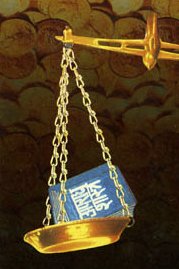Svarnakara, Svarṇakāra, Svarna-kara: 12 definitions
Introduction:
Svarnakara means something in Hinduism, Sanskrit, the history of ancient India, Marathi. If you want to know the exact meaning, history, etymology or English translation of this term then check out the descriptions on this page. Add your comment or reference to a book if you want to contribute to this summary article.
In Hinduism
Arthashastra (politics and welfare)
Source: Shodhganga: Kakati Ganapatideva and his times (artha)Svarṇakāra (स्वर्णकार, “goldsmith”) refers to an official title designating one of the seventy-two officers (niyoga) of the Bāhattaraniyogādhipati circle, according to the Inscriptional glossary of Andhra Pradesh (Śāsana-śabdakośāmu). The bāhattaraniyoga-adhipati is the highest executive officer of this circle (including a Svarṇakāra). For example: During the reign of Gaṇapatideva, the area extending between Pānagal to Mārjavāḍi was entrusted to Gaṇḍapeṇḍāru Gangayasāhiṇi as Bāhattaraniyogādhipati. Later on, this office was entrusted to Kāyastha Jannigadeva.

Arthashastra (अर्थशास्त्र, arthaśāstra) literature concerns itself with the teachings (shastra) of economic prosperity (artha) statecraft, politics and military tactics. The term arthashastra refers to both the name of these scientific teachings, as well as the name of a Sanskrit work included in such literature. This book was written (3rd century BCE) by by Kautilya, who flourished in the 4th century BCE.
India history and geography
Source: Google Books: Medieval Orissa: A Socio-economic StudySvarṇakara (स्वर्णकर) refers to a “goldsmith” and represents one of the occupational groups commonly found in Townships or Urban centers (nagari) in ancient India (Medieval Orissa).—An example (of Township) is provided by the Nagari plates of Anangabhima III, dated A.D. 1230, which describe an assigned township which contained four large houses of the dimension of royal residences and thirty other houses. The occupational groups present in the settlement were [e.g., a goldsmith (svarṇakara)]. The range of occupations is large, some of them being rural in character. The context in which the township (or Urban centres—nagari) is assigned suggest that nagaris in such cases were perhaps extended villages, formed out of a cluster of several contiguous villages and thus assuming physical and consequently, economic dimensions much larger than those of an ordinary village settlement.
Source: Cologne Digital Sanskrit Dictionaries: Indian Epigraphical GlossarySvarṇakāra.—(EI 24), a goldsmith. Note: svarṇakāra is defined in the “Indian epigraphical glossary” as it can be found on ancient inscriptions commonly written in Sanskrit, Prakrit or Dravidian languages.

The history of India traces the identification of countries, villages, towns and other regions of India, as well as mythology, zoology, royal dynasties, rulers, tribes, local festivities and traditions and regional languages. Ancient India enjoyed religious freedom and encourages the path of Dharma, a concept common to Buddhism, Hinduism, and Jainism.
Languages of India and abroad
Marathi-English dictionary
Source: DDSA: The Molesworth Marathi and English Dictionarysvarṇakāra (स्वर्णकार).—and other compounds with svarṇa See under the common word suvarṇa.
Marathi is an Indo-European language having over 70 million native speakers people in (predominantly) Maharashtra India. Marathi, like many other Indo-Aryan languages, evolved from early forms of Prakrit, which itself is a subset of Sanskrit, one of the most ancient languages of the world.
Sanskrit dictionary
Source: DDSA: The practical Sanskrit-English dictionarySvarṇakāra (स्वर्णकार).—a goldsmith.
Derivable forms: svarṇakāraḥ (स्वर्णकारः).
Svarṇakāra is a Sanskrit compound consisting of the terms svarṇa and kāra (कार). See also (synonyms): svarṇakṛt.
Source: Cologne Digital Sanskrit Dictionaries: Shabda-Sagara Sanskrit-English DictionarySvarṇakāra (स्वर्णकार).—m.
(-raḥ) A goldsmith. E. svarṇa gold, and kāra maker, worker.
Source: Cologne Digital Sanskrit Dictionaries: Cappeller Sanskrit-English DictionarySvarṇakāra (स्वर्णकार).—[masculine] goldsmith.
Source: Cologne Digital Sanskrit Dictionaries: Monier-Williams Sanskrit-English Dictionary1) Svarṇakāra (स्वर्णकार):—[=svarṇa-kāra] [from svarṇa] m. a g°-worker, g° smith (forming a [particular] caste; -tā f.), [Yājñavalkya; Rāmāyaṇa; Kathāsaritsāgara]
2) Svarṇākara (स्वर्णाकर):—[from svarṇa] m. a gold-mine, [Rājataraṅgiṇī]
Source: Cologne Digital Sanskrit Dictionaries: Yates Sanskrit-English DictionarySvarṇakāra (स्वर्णकार):—[svarṇa-kāra] (raḥ) 1. m. A goldsmith.
[Sanskrit to German]
Sanskrit, also spelled संस्कृतम् (saṃskṛtam), is an ancient language of India commonly seen as the grandmother of the Indo-European language family (even English!). Closely allied with Prakrit and Pali, Sanskrit is more exhaustive in both grammar and terms and has the most extensive collection of literature in the world, greatly surpassing its sister-languages Greek and Latin.
Kannada-English dictionary
Source: Alar: Kannada-English corpusSvarṇakāra (ಸ್ವರ್ಣಕಾರ):—
1) [noun] a man who makes and deals with articles of gold; a goldsmith.
2) [noun] a man belonging to the caste of goldsmiths.
Kannada is a Dravidian language (as opposed to the Indo-European language family) mainly spoken in the southwestern region of India.
Nepali dictionary
Source: unoes: Nepali-English DictionarySvarṇakāra (स्वर्णकार):—n. a goldsmith;
Nepali is the primary language of the Nepalese people counting almost 20 million native speakers. The country of Nepal is situated in the Himalaya mountain range to the north of India.
See also (Relevant definitions)
Partial matches: Svarna, Kaara, Kara.
Starts with: Svarnakaraka, Svarnakaramarana, Svarnakaran, Svarnakarata.
Query error!
Full-text: Svarnakarata, Svarnakrit, Connakaran, Svarnakaran, Swarnakaar, Cuvanakarakan, Kumaranandisvarnakara, Kara.
Relevant text
Search found 8 books and stories containing Svarnakara, Svarṇakāra, Svarna-kara, Svarṇa-kāra, Svarṇākara; (plurals include: Svarnakaras, Svarṇakāras, karas, kāras, Svarṇākaras). You can also click to the full overview containing English textual excerpts. Below are direct links for the most relevant articles:
Rig Veda (translation and commentary) (by H. H. Wilson)
Rig Veda 6.3.4 < [Sukta 3]
Notices of Sanskrit Manuscripts (by Rajendralala Mitra)
Brihaddharma Purana (abridged) (by Syama Charan Banerji)
Skanda Purana (by G. V. Tagare)
Chapter 242 - Eighteen Prakṛtis (Castes and Sub-castes) < [Section 1 - Tīrtha-māhātmya]
Agni Purana (by N. Gangadharan)
Harshacharita (socio-cultural Study) (by Mrs. Nandita Sarmah)
Part 2: Caste Hierarchy, Status and Duties < [Chapter 2 - Caste System]